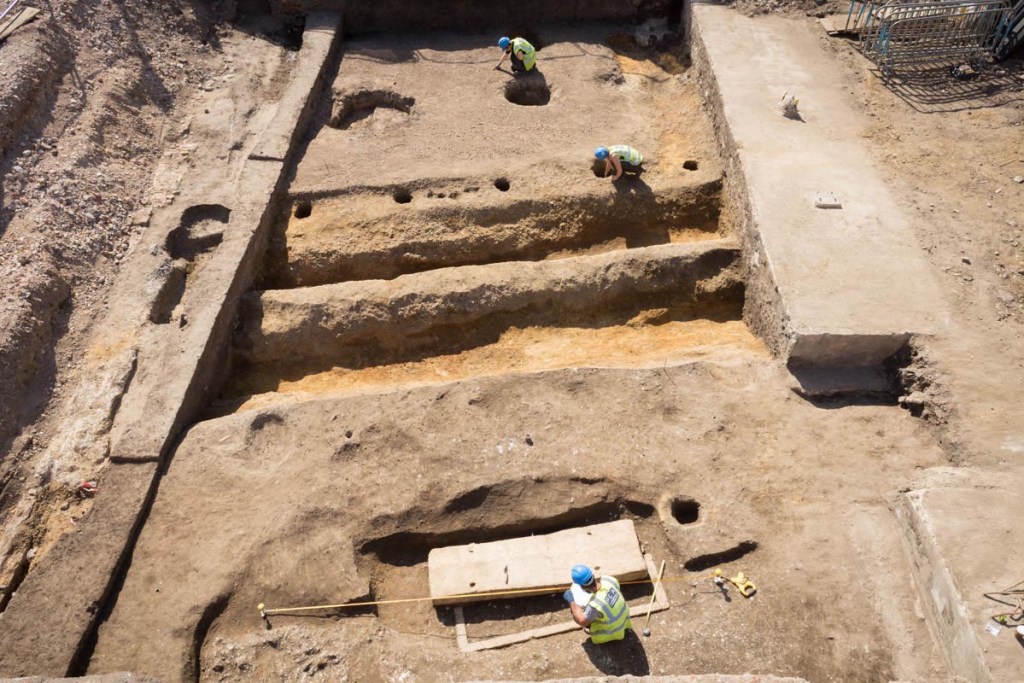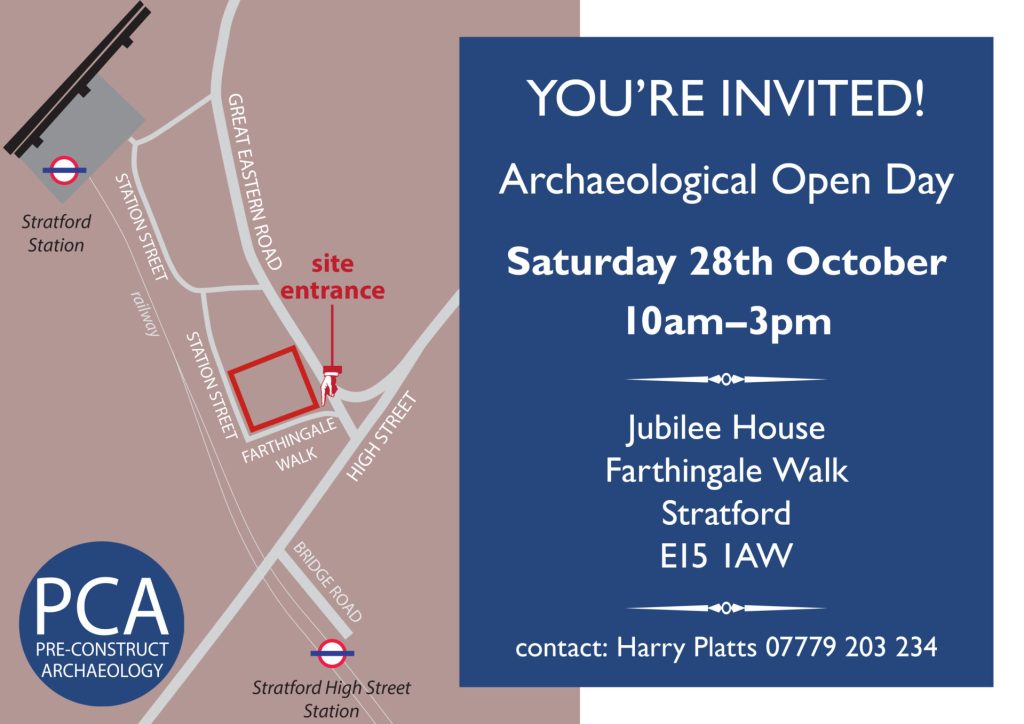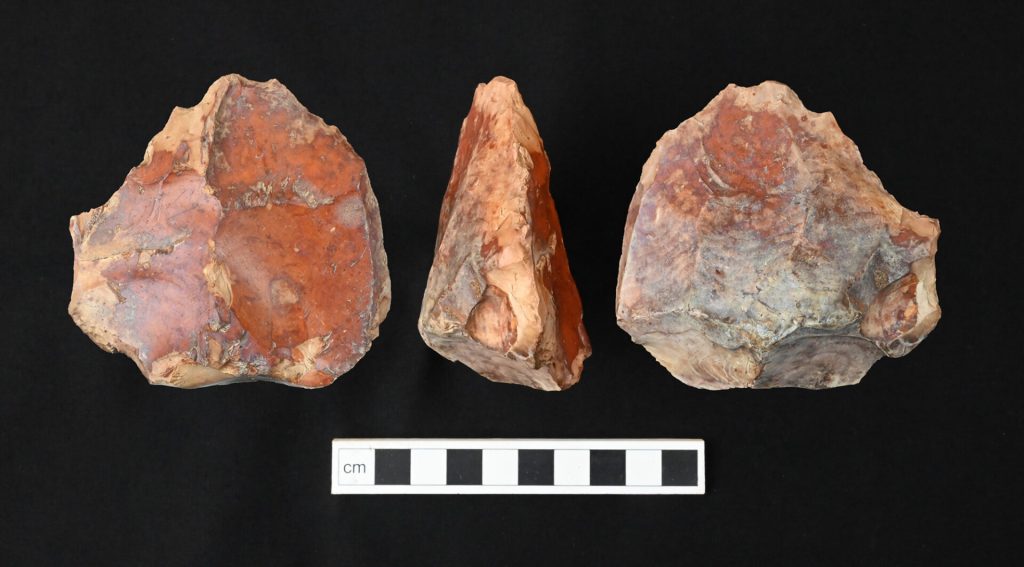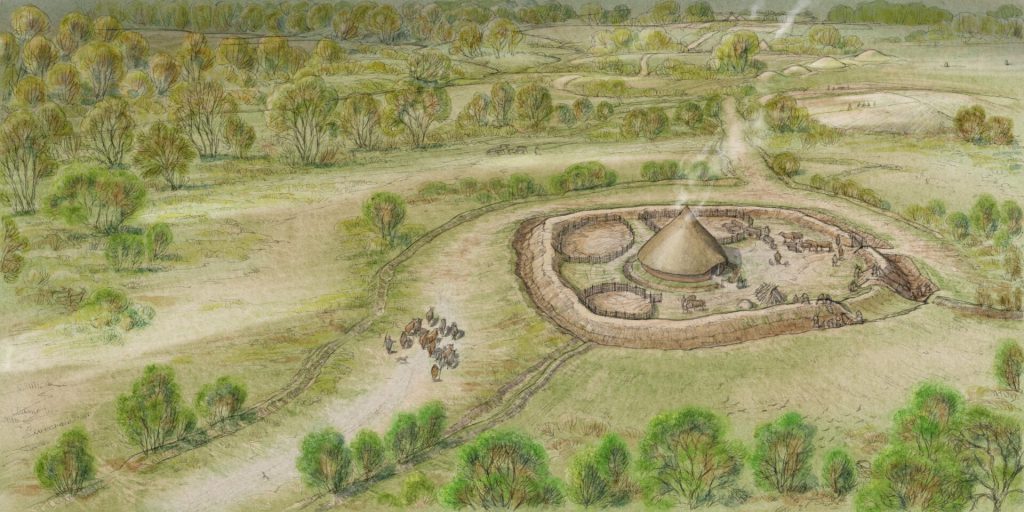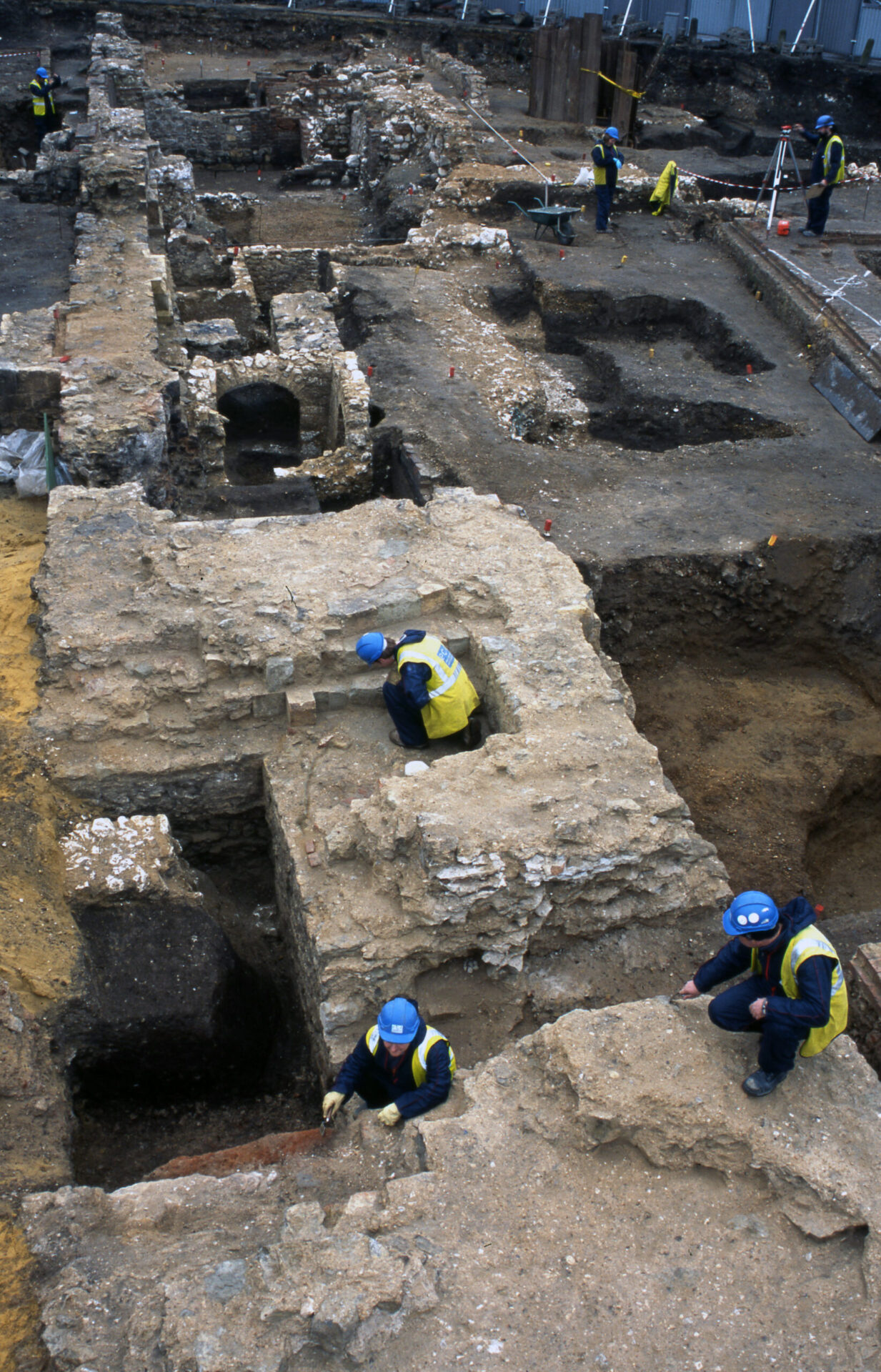In Trench 1, beneath two phases of medieval buildings which once stood along Lower Brook Street, excavation was terminated at 2m below ground where we encountered the water table. The deepest deposit in this trench was a black, organically rich layer containing medieval finds. We’ve taken both bulk and column samples from this layer, expecting to uncover a range of organic remains. What lies beneath this deposit? Could it be a long-forgotten river channel, an ancient ‘Brook’?
Meanwhile, in Trench 3, we have floor surfaces at 2m below ground level! These are cut by pits containing medieval finds, including pottery that could potentially be late Saxon. The surfaces are also associated with substantial wooden piles driven into the river silts, that may have supported walls. So are we looking at a Roman building or perhaps a Saxon building? With its rudimentary flooring, what was this building and what was it used for? We’ll keep you posted!
